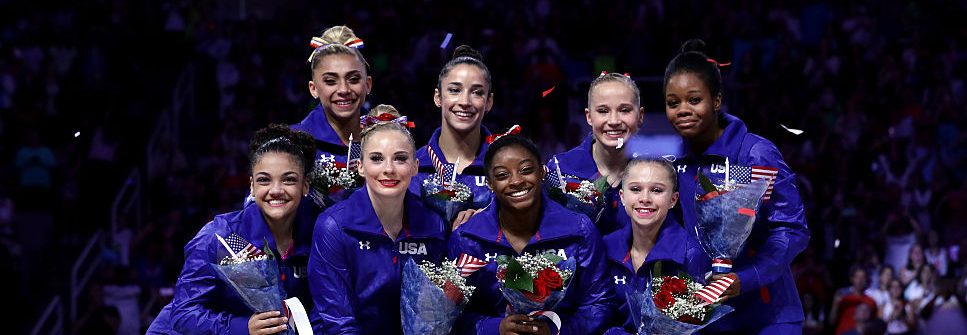As allegations of sexual assault and harassment in Hollywood, the media, politics, and youth sports continue to mount—on Thursday, The Washington Post published a bombshell exposé, where a woman accused Republican U.S. Senate hopeful Roy Moore of abusing her when she was 14 years old, and just yesterday, Olympic gymnast Aly Raisman went public with claims she was continually abused by a team doctor—some are trying create a safer infrastructure that will prevent these abuses from occurring in the first place.
Harper just published a thorough, and distressing, report about sexual abuse in American athletic organizations and how the U.S. Olympic Committee has tried to deal with its own sexual abuse scandals. To change the culture that allowed and enabled—and ignored warning signs of—abuse, the USOC has established the U.S. Center for SafeSport, a centralized office to deal with any allegations of misconduct. But some argue that its effectiveness is limited by other institutional realities.
The first problem: SafeSport can only investigate claims of misconduct within the USOC system. This means it excludes other organization like the Amateur Athletic Union, which oversees thousands of children and teenagers. As an example of how this oversight could be manipulated, one coach who was suspended from a USOC-connected volleyball association for impropriety with underage athletes simply moved on to coaching teenagers on an AAU team.
Additionally, SafeSport has limited control over both the governing bodies within the USOC and the hundreds of private clubs under their umbrellas. Generally, these clubs have had autonomy over how, when, and if they process sexual assault complaints, and that’s been a difficult hurdle to overcome for SafeSport. U.S.A. Gymnastics’ policy, for example, was to only field queries from assault victims or their parents, which allowed abusers to move around their system for years without resistance from the organization.
SafeSport hopes that two measures they’ve introduced to the USOC will better address these systemic problems. Not only can anyone in the USOC system report an allegation to SafeSport, they will pass that information over to law enforcement. Offenders’ names will be added to a searchable database that identifies their date of suspension. With proper funding, SafeSport hopes to do more to set official boundaries within the relationships between coaches and younger athletes.
That said, the extent to which elite sports still enable sexual violence is troubling, and there are many economic incentives (TV broadcast rights, sponsorships, marketing partnerships, licensing agreements) to sweep any abuse allegations under the rug. Here’s hoping SafeSport can go the distance.
Whether you’re looking to get into shape, or just get out of a funk, The Charge has got you covered. Sign up for our new wellness newsletter today.


















